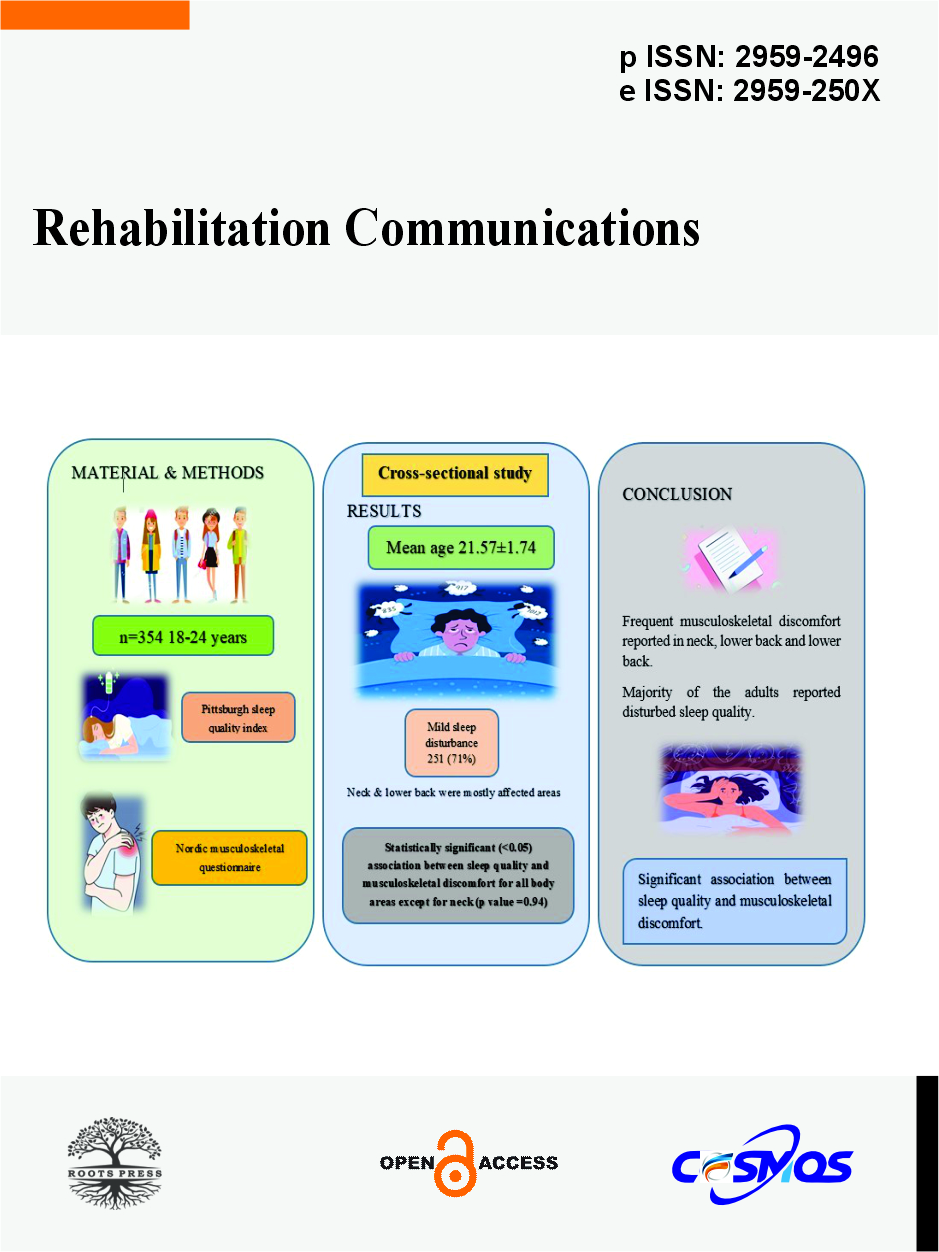Association of Sleep Quality with Musculoskeletal Discomfort in Young Adults
DOI:
https://doi.org/10.55627/rehab.003.001.0775Keywords:
Back pain, discomfort, musculoskeletal pain, sleep hygiene, young adultsAbstract
The purpose of the study was to determine the prevalence of sleep quality and musculoskeletal discomfort and to investigate the association of sleep quality with musculoskeletal discomfort in young adults. This was a cross-sectional study, conducted online on young adults in twin cities of Rawalpindi and Islamabad, Pakistan. 354 participants were selected through a convenient sampling technique on the basis of inclusion criteria of healthy adults of both genders with an age range of 18-24 years. Participants with diagnosed neurological/cognitive impairment and musculoskeletal injuries were excluded from the study. A self-structured questionnaire was used to obtain demographic data. Pittsburg sleep quality index and Nordic scale were used to assess sleep quality and musculoskeletal discomfort. Results showed that the mean age of the participants was 21.57± 1.74. Among 354 individuals, only 46 participants (13 %) exhibited sound sleep duration with no sleep disturbance whereas 251 participants (71%) reported mild sleep disturbance. Neck (46.6%) and lower back (36.2) regions have been mostly affected due to sleep disturbances. A significant association (p-value <0.05) between sleep quality and musculoskeletal discomfort has been observed for all body regions except for the neck (p-value 0.94). It is concluded that the prevalence of musculoskeletal discomfort is not common in all body regions however, neck, shoulder, upper, and lower back pain showed the most frequent discomfort. Sleep quality of the majority of young adults was also poor and disturbed and a significant association between the two factors has been observed.
Downloads
Published
Issue
Section
License
Copyright (c) 2024 Zoya Mehmood, Iqra Imtiaz, Syeda Ruqayyah Fatima, Fatima Hadi, Naveed Ahmad

This work is licensed under a Creative Commons Attribution 4.0 International License.








